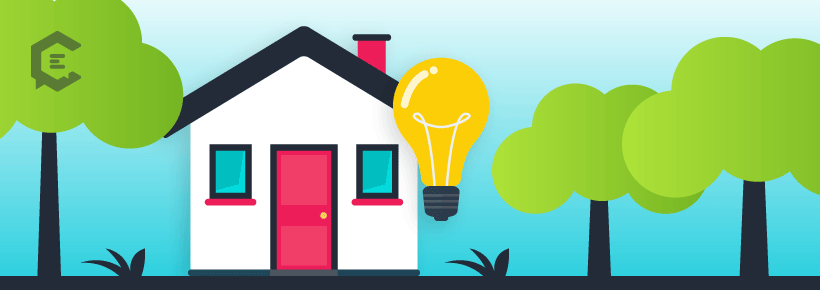The very first day I spent working remotely felt like a dream. I walked downstairs from my apartment overlooking the Adriatic Sea in Split, Croatia, to a co-working space. Filled with long tables and plush couches, I found a spot near a window, giving me a glimpse of the shore and the waves past the street. Inspiring quotes added color and dimension to the concrete walls — and within an hour I had learned how to use an espresso machine to make (free) Americanos. As I stretched my legs out long and pulled the side table across my lap, I couldn’t help by smile to myself, amazed — and frankly, dazzled — that my new life included such a comfortable, exciting work day.
Over the next 18 months of being a digital nomad, I learned how to file deadlines from anywhere life — and my wanderlust — brought me. Sometimes it was an open office with a pool for “breaks” in Thailand. Other days, it was the rooftop WeWork in Bogota, Colombia, where the skies were endlessly blue. By definition, being location-dependent lessens any restrictions most professionals have. Where you work, how much you work and how you work are all up to you — a concept that is rather radical for most. But while my morning walking commute through the many green parks of Prague or a peaceful bike ride through the muted alleys of Kyoto sounds romantic — those first three months of traveling require flexibility. Not only of mind but of income. Digital nomadic life requires you to reshape the way you approach and consider yourself as a professional and as a traveler, as those two identifies become undeniably intermixed.
If you’re considering booking a one-way ticket and trying out your ability to multitask, prioritize and still, collect passport stamps, here’s what you should expect, from those who have been-there, aced-that.
How to start digital nomading
1. Figure out your new normal.
For the first year of my travels, I was part of Remote Year, a company that organizes programs for nomadic professionals. I was one of 58 “Yugens” — the name given to our group — and we lived day-in, day-out together, hopping across 10 countries, three continents and 12 international cities. Early into our adventure, we were told how important it is to open ourselves up to a new normal — and allows ourselves to adapt as it took form. This means something different for everyone, depending on what they value and need, and where they happen to be in their career.
Akua Sencherey, client relations professional and content creator, says this is what those first three months are always about. “Change is always tough to adjust to. And if you’re completely new to working remotely, it’s a major difference from commuting to an office every day and being in the same physical space as your coworkers or clients,” she explains. “I remember feeling both free to plan my day how I wanted to and feeling confused at how to best prioritize my time for success and productivity.”
Your first week — and frankly, your first month — will feel like a whirlwind. Make sure to take note of when you feel great, when you perform your best and what energizes you. This will ebb and flow and shift as you become more engrained to the remote lifestyle, but being mindful of how you feel will help you adjust faster.
2. Learn how to exercise “no.”
Designer Veronica Silva spent a year traveling and continues to nomad when the opportunity strikes. During the first quarter of her journey, she quickly realized just how many things there were to do. To see. To eat. To experience. And even though she spent a month in each of her destinations, it still wasn’t enough time to cover every last corner — and also meet the deadlines and demands of clients. It’s a beginner’s mistake — but one that will leave you feeling exhausted, ASAP. “You want to visit all the places, do all the things, try all the food — and work in the meantime — in a very short amount of time,” she continues. “Yes, you need to make some time during your week to explore the city you’re in, but you can’t do everything at once.”
A way to bring yourself down to earth so you can keep up your gig on the road is to think of your lifestyle before traveling. Silva suggests asking yourself these questions:
- Did you go to every museum in your town?
- Did you eat out every day?
- Did you stay up late every night meeting people at bars and then go work early in the morning the next day?
- The answer will probably be no, so why try to eat the world while you’re traveling?
3. Try working from home first.
Before I arrived in Croatia, I worked from my East Village apartment in New York for three weeks. This time was so essential in teaching me how to be full-time freelance — thus, completely responsible for my income. Sencherey did the same, but for three months to prep for the remote lifestyle. “I started to build good habits about being ‘on’ and setting boundaries for when to end my work day. Ultimately, it’s really a time of feeling the growing pains of a new work style but also an opportunity to figure out how you truly work best and execute on that,” she explains.
4. Consider what you need from other people.
Even though you’re mesmerized by ever-changing sights, cultural immersions and the experience of utter freedom — there are parts of being a remote worker that feel alone. No matter if you’re traveling solo, with a buddy or a herd of people, you’re far from the place you used to call home and all of the people in your former community. And if you happen to be gainfully employed but apart from your coworkers, you could feel feel left out. Same with clients who you used to see in person — but now you only connect with via Skype.
“The loneliness part can be the hardest for some people to adjust to,” Sencherey shares. “You’re going from being in a physical space with people and talking with them over coffee or while in the lunchroom to potentially spending days and maybe weeks without those happenstance, real-life connections occurring in person.”
When you can, set up times to chat with your friends back home by meeting somewhere in the middle of your time zones. Join in on client celebrations in whatever way you can feel included, and make sure to carve out time to detox with a trusted pal. These will not only benefit your performance — but your state of mind and happiness, too.
5. Feel empowered to set your own boundaries.
Because your Instagram will look mighty different as you work from cute cafes, climb mountains and see wonders of the world — your clients and colleagues may become a bit jealous. Or more so, doubtful of how hard you’re actually working when it looks like all you do is play. Many digital nomads feel the need to overachieve and prove themselves by being available at any moment — since hey, it’s likely you’ll be about to head to bed when others are getting up to start their day, thanks to time zones. Even so, Sencherey stresses balance. “It’s just as important to set boundaries for your working hours while you’re traveling and to let your coworkers know so that they can help keep you accountable and understand where you may be compromising for that late night/ early morning meeting that could have been scheduled at a different time,” she explains.
You are working abroad to see the globe, after all. So if you spend all your time online and hustling, you won’t feel fulfilled. Though you won’t be able to do everything , there’s no point in living in Lima if you aren’t going to eat the ceviche, try your skills at surfing, or get lost in the colorful stress of Miraflores.
6. Prioritize consistency.
When you’re a digital nomad, there’s a temple that’s thousands of years old a ten-minute Uber from your workspace in Thailand. Or you know, a beautiful beach with $1 cocktails within sight. All of the temptations of landscape, history and adventure make staying focused that much harder. However, a routine and consistency will ensure you not only enjoy where you are — but make enough money to support your lifestyle.
“Many people feel a different type of distraction when working and traveling. Some of this can be due to the excitement of being in a new place, but it also could be caused by too much change in the environments that you’re working in on a day-to-day basis,” Sencherey shares. “Having some consistency in the physical space you work in or the particular desk you’re at, really having a work routine, can help mitigate the level of travel distractions that come with digital nomading.”
Though it took Sencherey a while to figure out her own speed, a schedule with blocks of work and play will ensure those first three months aren’t only about getting by — but savoring this new dynamic you’ve created for yourself.







